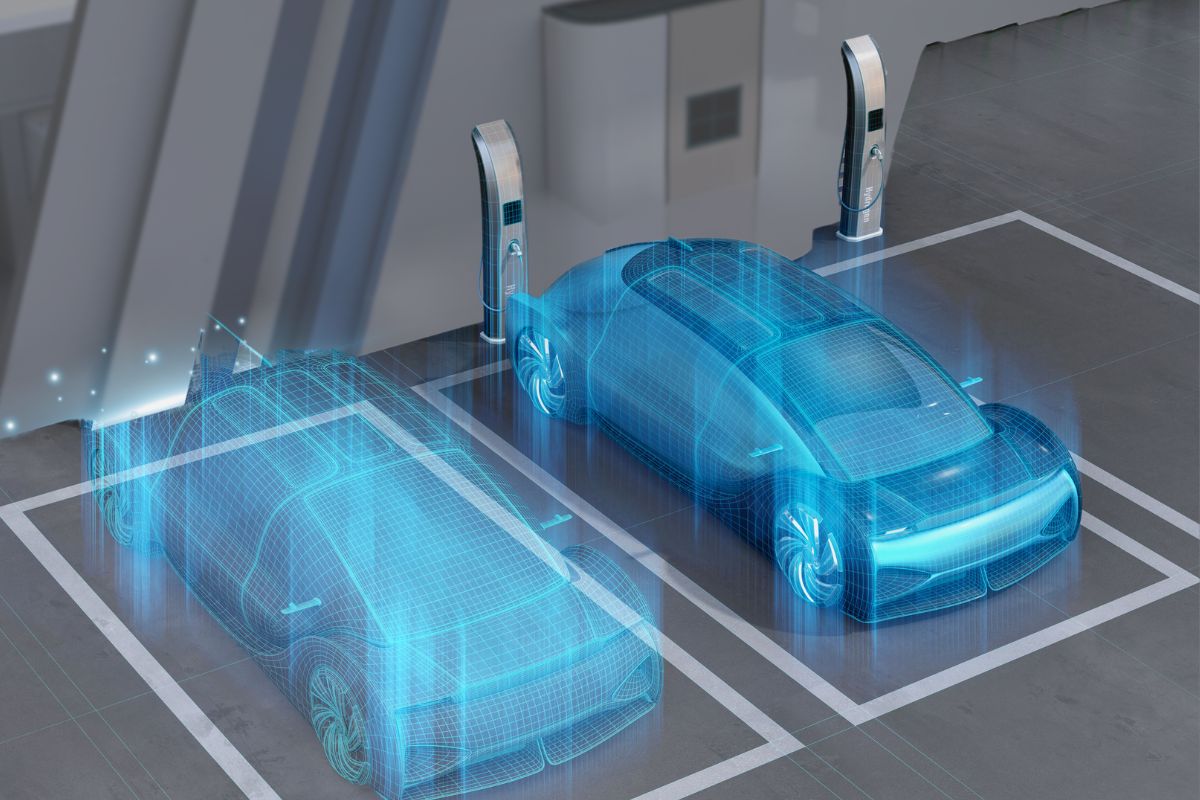A digital twin is the fastest technology that changes the way of design, testing, and use. It is an innovative and latest technology. This technology will continue to grow the automobile industry with flawless manufacturing, dynamic supply, and maintenance. It also solves many issues through virtual replicas. According to the experts, the automobile industry will reach $73.5 billion by 2027. This article will help you to know about this, their future, benefits, and challenges.
What is a Digital Twin?
This technology is a virtual replica of the real thing which is a computer-made version. It works as a real object like a car, engine etc. This will help to sense the data, temperature and speed to work like a real object. For example, you play a racing game and the racing car behaves like in real-world racing car. The car in-game copies all the moves of real life. If any changes come in real life, it change in the game also. This is called digital twin development.
How Digital Twins Work in the Automobile Industry
Many digital twin companies help the automobile industry with designing, development, testing, production, and maintenance. It helps designers and engineers create virtual replicas of the products. It helps to design in many ways:
- Early stage design
- Testing
- Manufacturing
- Maintenance
- Customer experience
1. Early Stage Design
The early stages include development and design. Digital twin in the automotive industry is used to design new objects like cars, bikes, and so on. They create digital models that can be tested for speed, safety and efficiency. This saves money and time.
2. Testing
The Digital twin in the automotive industry will help engineers test the behaviour of the object in different conditions. For example, how a car will perform in rain, snow and rough roads. They also check their parts, like brakes or engines. This will help to improve quality and performance.
3. Manufacturing
Digital twins will help in manufacturing. The worker finds many innovative ways to improve that reduce downtime and increase productivity.
4. Maintenance
Digital twin companies will help with maintenance. Mechanics see all the issues of the object and sort it through this technology. This will help to keep objects safe.
5. Customer Experience
Many automobile companies use the technology to provide better service to the customer. That will help to give a great experience to the customers. For example, a car company suggests a way to drive the car safely and reduce servicing time with the help of this technology. It will also help customers.
Benefits of Digital Twin
The benefits of digital twins in the automobile industry are faster production, better quality, improved safety, and many more. Here are all the benefits mentioned below:
1. Saving Time and Money
Automobile companies save their time and money with the help of a digital twin. It allows testing without creating a real model. The companies address the issues early, which reduces the cost of fixing.
2. Better Quality
A Digital twin will help to improve the quality of the product. Engineers tested everything in a virtual environment.
3. Faster Production
With the help of Digital Twin, factories accelerate the production process. They fix everything without delays.
4. Improved safety
Safety features will help to driver and passenger. Companies do all testing related to dangerous or risk factors.
5. Environment-Friendly
The digital twin is environment-friendly. It will help to reduce waste through the less usage of materials and energy.
Challenges of Digital Twin
Every technology gives many benefits to the industries, but they also have challenges. The Digital twin also has many challenges:
1. Higher cost
Automobile companies require software, hardware, and skilled teams that incur costs. So, creating a digital twin can be costly.
2. Data security and privacy
As we know, a digital twin requires data from sources, IoT, and BIM models that are important and private because they include secrets, customer details, and many other things. It is very important to protect data from hackers.
3. Training and skills
Every employee needs training. But the challenge is every worker didn’t knows the technologies and tools of the digital twin. So companies invest in their education also.
4. Adoption barriers
Digital twins also have adoption barriers. These barriers can be a lack of understanding or fear of change. The technology is full of complexity and requires knowledge and expertise.
Is a digital twin a 3D model?
The digital twin is bigger than the 3D model. A 3D model is a visual representation, while it is a virtual replica of the objects that include 3D models. For example, a 3D model shows how the car looks but it shows how the car looks and its performance. Here is the difference between a 3D model and a digital twin:
Differentiate a 3D model and a digital twin
| Feature | Digital Twin | 3D Model |
| Definition | A real-time virtual replica of a physical object or system, connected to data | A static visual representation of an object in three dimensions |
| Data Integration | connected to real-time data from sensors and systems | Usually not connected to real-time data |
| Interactivity | Interactive and dynamic; reflect changes as they happen in the real world. | Usually static; changes must be made manually. |
| Simulation Capabilities | Can simulate the behavior, test scenarios, and predict outcomes. | Mainly used for visualization, not simulation. |
| Real-time Updates | continuously updated with live data | updates only when manually modified |
| Purpose | Monitoring, diagnostics, predictive maintenance, and decision-making. | Design, visualization, presentation |
| Use in Industry | Used in smart manufacturing, vehicle diagnostics, and product lifecycle management | Used in design, marketing, architecture, and prototyping |
| Complexity | Highly requires data systems, sensors, software, and modelling | Medium – focuses mainly on appearance and structure |
| Cost to Develop | Higher, due to data integration and software tools | Lower – mostly visual development. |
| Example | A virtual car that shows fuel use, tyre wear, and engine status in real-time. | A 3D model of a car to showcase its design |
What is a Digital Twin with an Example?
It is a virtual replica of a real-world object. It works as a real object, like a car, an engine, etc.
Real-World Examples
- BMW uses it for planning and tracking the production process. It will help to zero error development.
- Tesla uses it for collecting data that improves problems and performance.
- Ford uses it for design and testing.
Conclusion
In the future, the use of digital twin will be growing. The need for this is increasing with the rise of electric vehicles and self-driving technology. It will help the automobile companies stay competitive. Digital twin development includes design to production that offers many benefits, like cost consideration, quality control, and worker training. As technology grows, this technology will also rise in the automobile industry. For the industry, it proves itself a major part of the development process that includes manufacturing, production, testing, and customer experiences in innovative ways. BMW, Tesla, Ford, and many car companies use this technology with multiple benefits.










